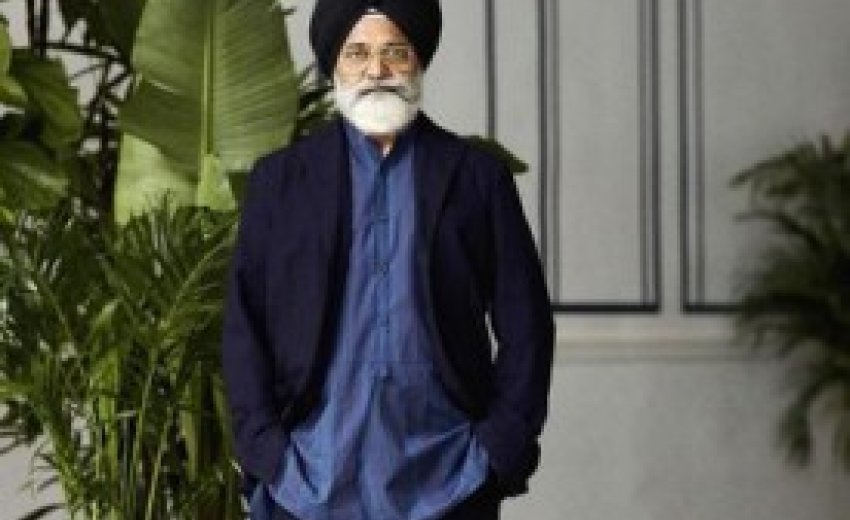High-end fashion labels recruit regular guys off the street to work the catwalks
 |
| During the recent men’s fashion shows, designers in New York and Europe mixed it up, casting both professional and amateur models on the runways. http://cfda.com/programs/new-york-mens-week |
July 26, 2016: On a recent Wednesday afternoon, yellow-cab driver Ajit Singh Bharth had just dropped off a passenger in Midtown Manhattan when he attracted some unusual notice.
“I knew that I had to catch that cab,” said Quinton Clemm, an account executive at upscale men’s fashion-label Eidos. “Luckily, two blocks later, the taxi caught the light at 55th and I was able to dodge traffic and hop in the back.”
Mr. Clemm was in hot pursuit of more than just a ride. He was struck by the “older gentleman” with “gold-rimmed, aviator-style bifocals, a tan spread-collar shirt, with an awesome, full, white beard.” Once in the car, he offered the 62-year-old cabby an opportunity most people only dream about: Would he be willing to model in a fashion show?
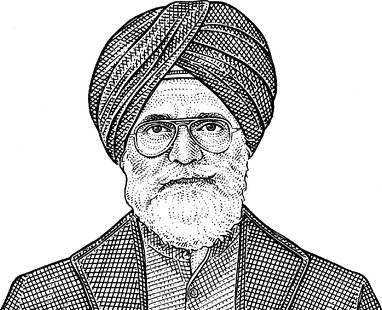 |
| Ajit Singh Bharth |
For male models, the unconventional—and the nonprofessional—is in. A number of fashion houses are seeking rough-hewed, quirky faces that are more character actor than Hollywood idol.
In Milan, the high-end fashion label Etro, known for its bold prints, sent an interior designer, a film director and a broker down the runway.
“The days of classic beauty are over,” said Taylor Hendrich, director of men and celebrity at Wilhelmina, a modeling agency based in New York. “You have to be really special.”
The aim is to appear more authentic in order to resonate with a wider audience of shoppers. That means looking beyond the skinny, boyish teens and the square-jawed hunks that have long dominated the runways.
Even heavyset is hip. IMG Models, one of the world’s largest agencies, launched a division called “Brawn” for plus-size male models earlier this year. In search of fresh faces, fashion labels are looking to the street, and Instagram, for talent.
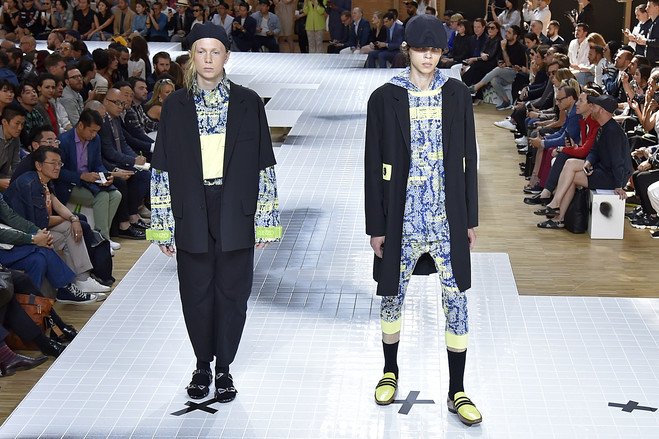 |
| Australian teenager Tom Short, left, got his big break in Paris while visiting his grandparents. After being spotted on the street, he was asked to model for the fashion label Kenzo. Photo: https://in.pinterest.com/pin/118782508901082973/ |
At the Paris-based fashion house Kenzo, the theme of the spring 2017 collection was New York City nightlife, with models meant to evoke the spirit of friends who go clubbing.
“We wanted to convey a natural swagger and attitude that you might not get from conventional casting,” said Humberto Leon, co-creative director of Kenzo and co-founder of fashion retailer Opening Ceremony.
So for their Paris show, they took to the streets to find guys like Tom Short—a 19-year-old university student who was in town visiting his grandparents from Australia.
Spotting the lanky blond tourist with shoulder-length stringy hair, the Kenzo team asked Mr. Short if he would be interested in walking in the house’s fashion show. The next day.
After trying on several outfits, and posing for a few photos, Mr. Short, who describes himself as having a “stoner” look, was in. For the presentation, “we had to walk super quick and I went for the ‘there’s nobody home’ look so I was looking straight ahead, dead eyed,” said the teen.
The experience was “definitely cool,” said Mr. Short, who wore a loose-fitting pants ensemble with a yellow-and-blue top and sandals with socks. For his stint, he got paid about $675. As a bonus, “I get to say I walked in Paris fashion week,” he said.
At Etro in Milan, the non-pros received no specific instructions on how to walk. Several of them smiled goofily at the audience. A few hammed it up, slapping palms as they passed each other and waving to the crowd. At least two decided to walk barefoot.
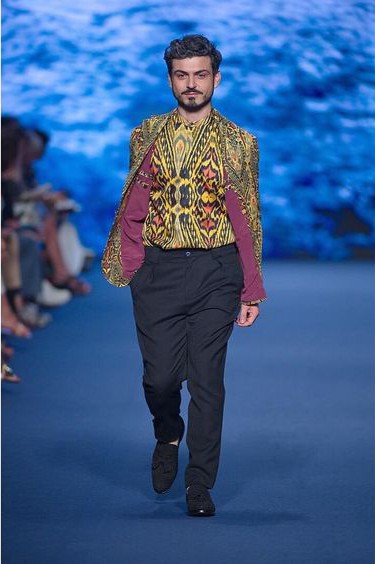 |
| Tommaso Sacchi, chief of the cultural office for the city of Florence, had the coveted role at Etro of being the last model down the runway. Photo: www.wsj.com |
An increasingly diverse customer base has led to calls for the fashion industry to expand the notion of what’s considered attractive. “We’re finding that mass brands are casting more widely because their audience is diversifying,” said Sarah Owen, senior editor of digital media and marketing at trend forecaster WGSN.
The push to recruit regular people also reflects a new aesthetic—one that values individual expression and a rawer, more-imperfect style in which one doesn’t look “too done,” said fashion executives.
The new laissez-faire attitude worries some professionals, who fear the novices could threaten their livelihood. “Those are our jobs,” said Flint Louis Hignett, a svelte hazel-eyed professional model, at a presentation for the Coach fashion label. “I don’t like it.”
A fellow model at Coach, Brandon Bailey, was conflicted. After all, he had been discovered by a talent agent on the street a little more than a year ago. “I have a problem with, like, people who aren’t models taking our jobs,” he said.
The newcomers probably don’t pose a serious threat in the long run, some designers say. They may not photograph well or not take the role seriously. “The measurements of ‘real people’ are always a challenge,” said designer John Varvatos. “Confidence is a must, and the clothes they are wearing should look like they belong.” While his label leans toward more unconventional-looking guys, he still favors pros.
For the Eidos presentation, which focused on the rich textile traditions of India, designer Antonio Ciongoli felt it was important to cast people from the culture to present the clothes in a respectful way.
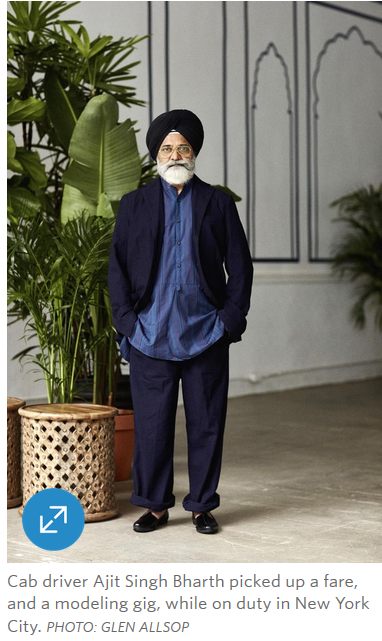 Cab driver Ajit Singh Bharth picked up a fare, and a modeling gig, while on duty in New York City.
Cab driver Ajit Singh Bharth picked up a fare, and a modeling gig, while on duty in New York City.
Mr. Bharth, the cabby, tried to avoid direct eye contact with fashion editor guests for more than an hour. “I enjoyed it,” said the driver, who went right back on duty after the show.
Tommaso Sacchi viewed his role at the Etro show in Milan with a bit more gravitas. Mr. Sacchi, who is the chief of the cultural office for the city of Florence, relished being a “model-for-a-day.” He said he found it fascinating that the designer had “moved from the idea of ‘modeling’ to the idea of ‘interpreting’ his pieces.”
The dark-haired Mr. Sacchi, who sports a goatee and mustache, also liked being the last model to walk in the show—a coveted position. The 33-year-old said he wasn’t nervous at all as he sailed down the runway in a yellow-motif shirt and jacket. With his right hand in his navy linen pants pocket, the jacket’s burgundy lining billowed into view.
While Mr. Short is still giddy about his impromptu star turn, he doesn’t mind that it was likely a one-off. “I would do it again,” he said. But “I’m lazy and it looks hard.” Plus, he added, ”I don’t like the idea of rejection.”
